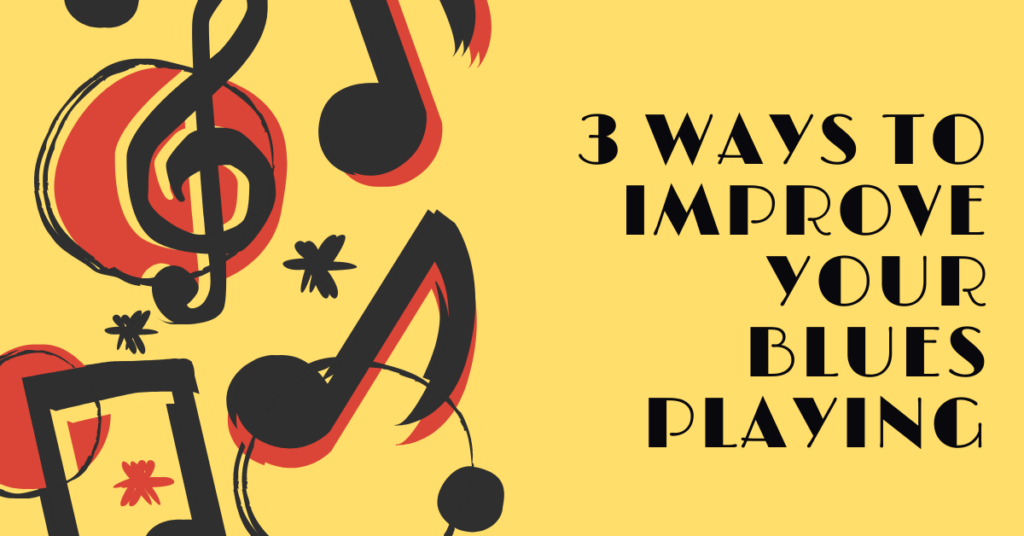In this article we’ll explore some of the more advanced blues chords that are used by the pros. These advanced blues chords will help you achieve those classic blues, jazz, and funk sounds that you may have heard on various recordings by some of your favorite players. All of these advanced blues chords can be used in various genres of music, but in order to offer a clear presentation here we’ll categorize them into three categories. These three examples – jazz, blues, and funk – represent some of the most common instances where you’ll find (and perhaps use) these advanced blues chords. Remember that “the blues” is not just a style of music, but also a “form” of music (such as the 12-bar blues form). It’s quite common to encounter the blues form used in a rock, jazz, or funk setting (and sometimes you’ll even see these cross-categorized labels – i.e., blues/rock, jazz/blues, blues/funk).
Advanced Blues Chords #1: Jazzy Quartal Voicings
This voicing really gets at the heart of many of those classic jazz blues voicings and can be found throughout the jazz language. “Quartal” voicings refers to chords constructed in 4ths, basically stacking 4ths (either perfect 4ths or augmented 4ths) on top of each other.
This is a dense, full-sounding two-handed chord (6 notes in total). We’ll construct it from the bottom up – (left hand) flat-7th, 3rd, 13th, (right hand) 9th, 5th, and root. Plugging this into an example using F7, we get Eb, A, D, G, C, F.
Advanced Blues Chords #2: Bluesy #11 Voicing
This chord is admittedly more of a “specific situation” kind of chord. It’s probably not a chord you would use extensively throughout a tune. But used appropriately it’s a powerfully potent chord that sounds killer. My advice – it’s most effective when used in bar 4 of a 12-bar blues form, right before going to the IV chord, either as the “I” chord or tritone sub of the “I” chord.
From the bottom up we would build this chord – (left hand) root, 5th, (right hand) 7th, 9th, 3rd, #11th. Using an F7(#11) chord and B7(#11) chord (the tritone sub of F7) as examples we get the following:
Advanced Blues Chords #3: Funky Sharp-9 Voicings
If you’re going to cover any of those bluesy James Brown, the Meters, or Soulive-style tunes, you’ll want to know this advanced blues chord. But you’ll also encounter this voicing in rock settings with artists like Stevie Ray Vaughan, Average White Band, and of course, Jimi Hendrix.
We’ll construct this voicing from the bottom up. It basically consists of three notes – 3rd, 7th, and #9th of a dominant 7 chord. Using an F7#9 chord as an example, it would be spelled: A, Eb, G#. For pianists, depending on the situation and context we can often add a fourth tone – the root of the chord. Often simply playing the top three notes in a rhythmic fashion is all you need. Sometimes (depending on range considerations), you can double the 3-note voicing in both hands. This sharp-9 voicing also works and sounds great when played on organ (or wurli or rhodes).




